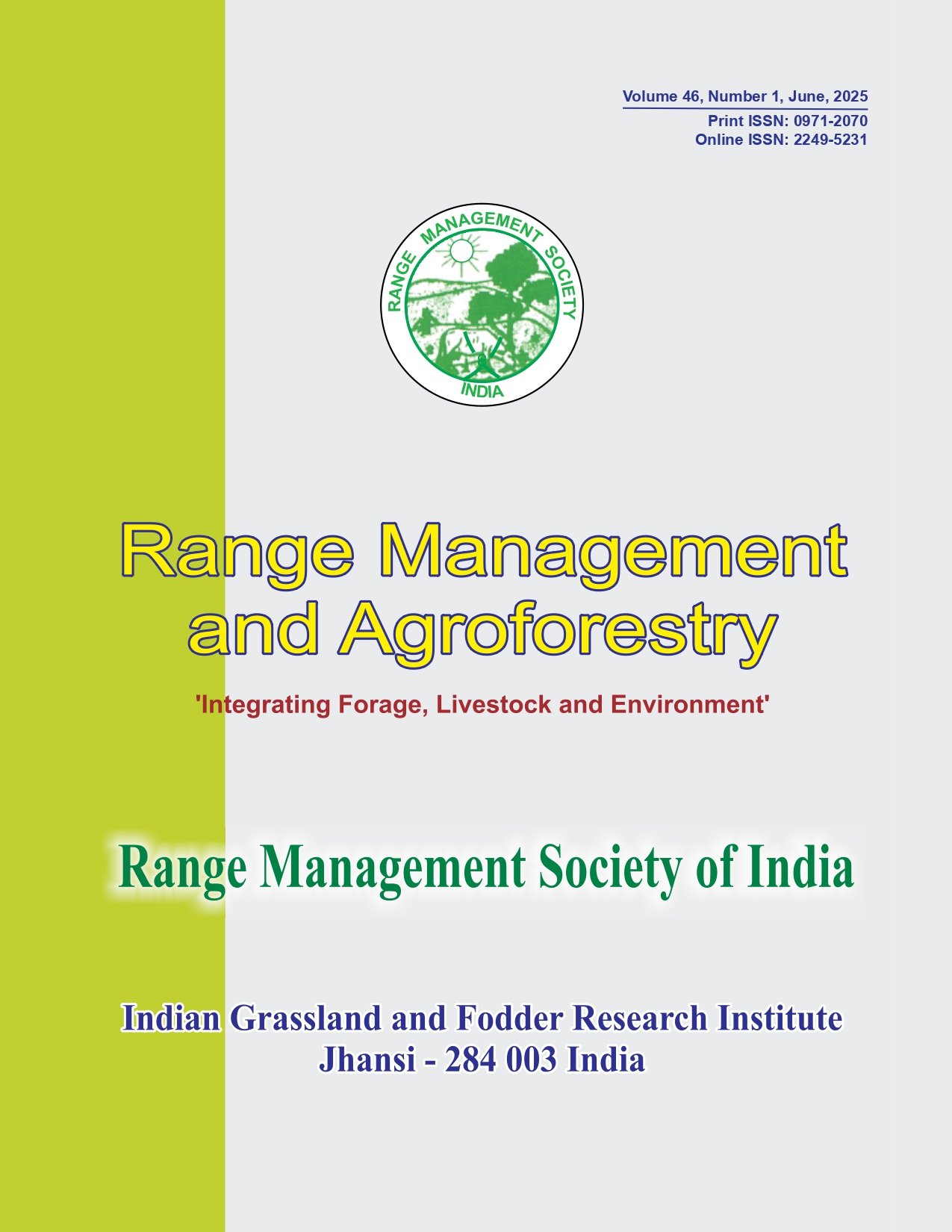Effect of planting methods and deficit irrigation on yield and quality of maize (Zea mays L.) stover and their residual effect on cowpea (Vigna unguiculata L.) haulm yield on vertisols of semi-arid tropics
Keywords:
Cowpea, Crude protein yield, Deficit irrigation, Maize, Planting methodsAbstract
A field experiment was conducted during Zaid and Kharif season of 2015 and 2016 to study the effect of planting methods and deficit irrigation on protein yield and economics of maize stover and their residual effect on cowpea haulm yield on vertisols of semi-arid tropics. Three planting methods i.e. broad bed and furrow (BBF), corrugated furrow, and ridges and furrow method were considered as main plot and four irrigation levels i.e. irrigation once in ten days, irrigation at 40%, 50% and 60% of available soil moisture depletion (ASMD) as sub plots in split plot design with three replications. Results revealed that planting methods did not influence the maize stover yield and total CP yield. Whereas, irrigation at 60% ASMD and irrigation once in ten days significantly reduced the stover and protein yield of maize. Further irrigation at 50% ASMD under ridges and furrow method had significantly higher maize stover yield (9364 kg ha-1), CP yield (951.4 kg ha-1) and system net return (Rs. 94468 ha-1) as well. Similarly residual effect of BBF method enhanced the haulm yield (2556 kg ha-1) and CP yield (356.7 kg ha-1) of cowpea during kharif under rainfed conditions. The total CP yield of maize-cowpea system found higher with irrigation at 50% ASMD under ridges and furrow method of planting (1317 kg ha-1). Therefore, maize and cowpea crops in sequence can be grown profitably with the water availability of 889 mm. Hence, irrigation at 50% ASMD under ridges and furrow method for maize and BBF method for cowpea could be the prominent and economical techniques. This could be a good alternate option to meet the dual needs of food grains and quality fodder in the vertisols of semi-arid tropics under scarce water.




